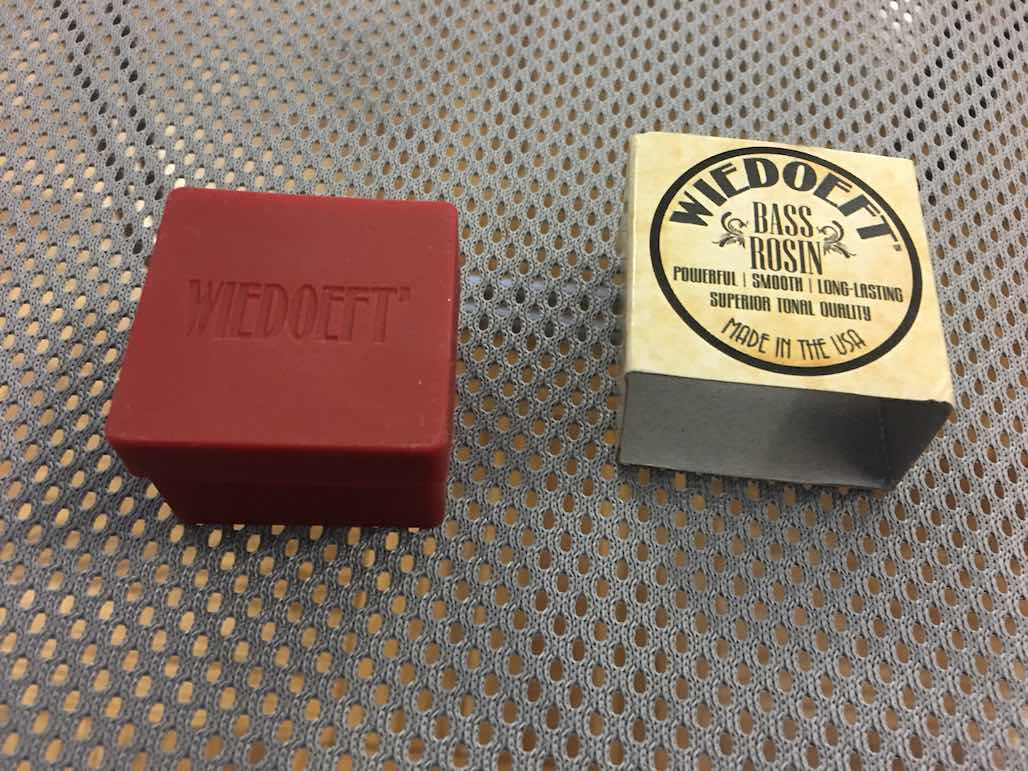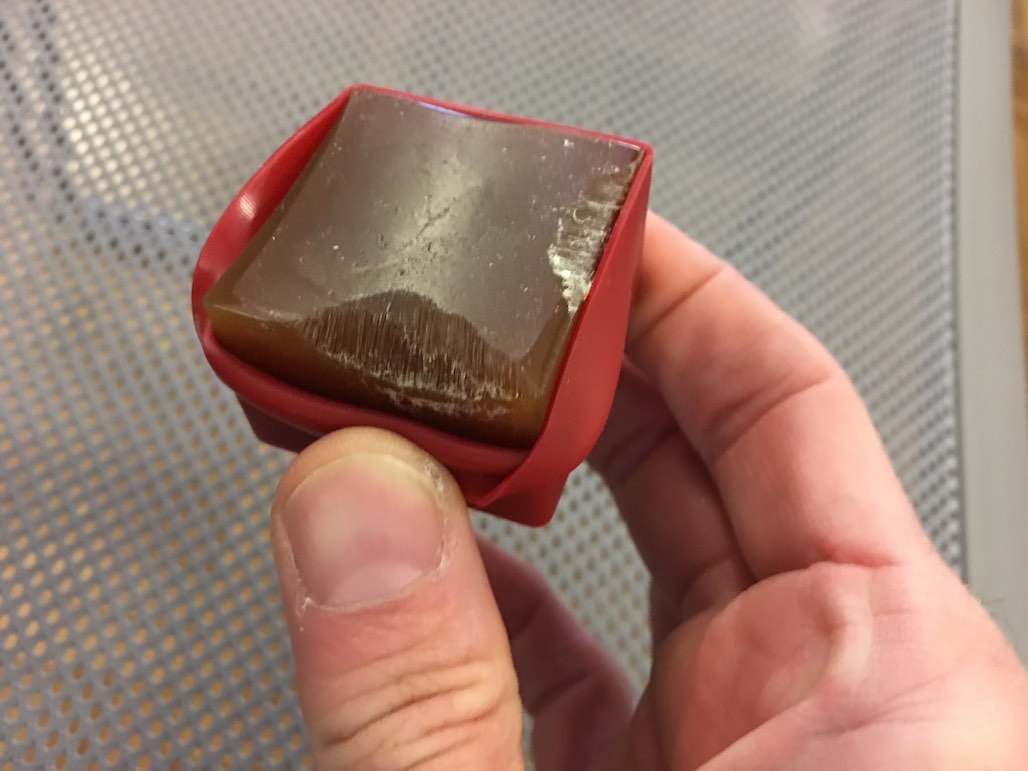I’ve used pretty much every rosin on the market during my 25+ years as an active double bassist. From Pops, Carlsson, Kolstein, and Nyman to Petz and Super-Sensitive Hypoallergenic Rosin, I’ve found things that work great for me and things that bug me.
Recently, I was sent a complimentary cake of Wiedoeft Double Bass Rosin. This rosin is available for violin, viola, cello, and double bass. I’ve been using the double bass rosin for the last month and thought that it would be interesting to share my impressions with you.
Though I didn’t purchase my cake of Wiedoeft Rosin, the following thoughts are my own personal impressions, not an advertisement for Wiedoeft.
How Wiedoeft is Packaged
Wiedoeft Double Bass Rosin comes in a glossy cardboard slip cover and is encased in a pliable red silicon case.

I’m a huge fan of this type of case. With more traditional paper or foil cases, you need to cut or tear off the sides of the encasing material to provide access for the bow.
Silicon cases keep things cleaner and neater, and they prevent the rosin from sticking to the sides of the container or spilling over the sides of the paper or foil.
Physical Characteristics
Wiedoeft is amber/brownish in hue, with more opacity than Pops. It’s not as dark as a Swedish style rosin like Carlsson.

In terms of texture, there’s more of a granularity than Pops, but without as much string build-up as Kolstein. In terms of texture, it reminds me a bit of Nymans if you get a really fresh cake.
For me, a little Wiedoeft goes a long way. More than two or three strokes results in that over-rosined throatiness.
Articulation with Wiedoeft
We bass players are obsessed with getting clean and crisp articulation without the throatiness caused by overrosining.
For me, Wiedoeft has a little less front end than Pops but does a great job of activating the A and E strings. There’s a little more “middle” to the sound than Pops.
The sound has a nice middle/register quality to it. My admittedly unscientific opinion is that Pops tends to produce a brighter sound with an immediacy of articulation, while Kolstein and Carlsson have a little less immediacy to the attack (or a different sort of attack) and a little more darkness to the sound.
Wiedoeft lands in the sweet spot for me, with a little more “Popsiness” (is that a word?) to the attack but with a middle of the road sustained sound. It’s kind of like marrying the characteristics I like of Pops and the Swedish-style rosins.
Gear Variances
It goes without saying, I hope, but rosin is one link in a very long chain of factors in terms of determining sound and playability. Different basses, bows, strings, and playing styles will, in my experience, lend themselves to different rosins.
I have been using D’Addario Kaplan double bass strings for the past year, and I really enjoy how Wiedoeft responds with my Dolling bow on these strings. There’s
Weather Variances
I live in San Francisco, which is a moderate climate with a good amount of humidity. In terms of rosin characteristics, your mileage may vary depending on your climate. I’ve found Wiedoeft to respond quite well here in San Francisco, and it has worked well for me on recent trips to Las Vegas and Dallas as well.
Final Thoughts
I’ve been using Wiedoeft Bass Rosin exclusively for the past several months, and I’m quite happy with the response, tone, and longevity of the rosin. It has a crisp articulation with good sustain, and I highly recommend picking up a cake!
You can learn more about Wiedoeft Rosin in the video below and also on their website.
Bass News Right To Your Inbox!
Subscribe to get our weekly newsletter covering the double bass world.


Hi Jason,
I have been using Pop’s and was interested in your review, but when I saw the price at $40 I fell out of my chair………….Pop’s will have to do.
Pop’s is great too!